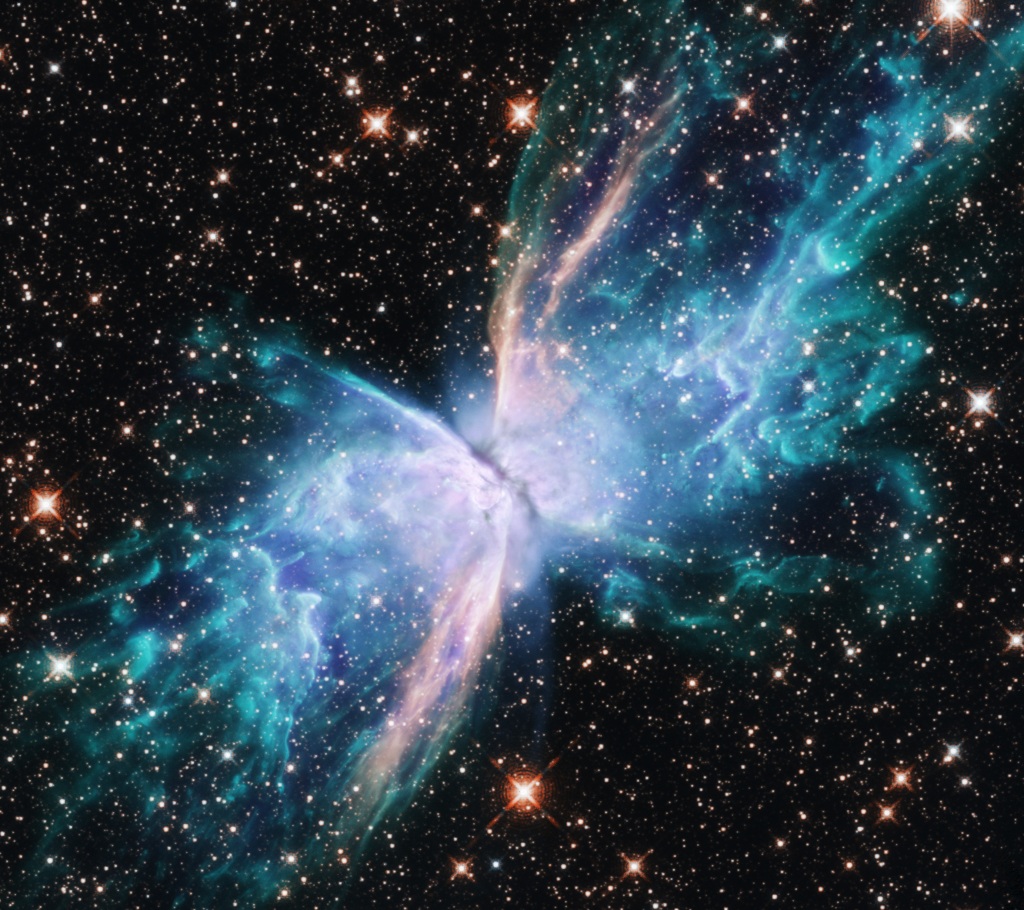[ad_1]
July’s night skies are legendary for their sheer abundance of celestial objects such as immense star clouds, light and dark nebulae, crowded clusters and oddities.

By midnight all month, the Milky Way galaxy stretches from below the southern horizon to high overhead before plunging into the northeastern abyss. The stellar cascade soars above and beyond, so these nights are primed for long exposure astrophotography and time-lapse videos.
Constellation Scorpius reaches its highest point above the southern horizon for the year — culminates — when it straddles the north/south meridian 9 p.m. July 20. To its east lies Constellation Sagittarius, which culminates next month. When you look between the two constellations, you’re looking in the direction of the unseen bulging center of the Milky Way. As a point of reference, the exquisite Butterfly Nebula (NGC 6302) follows the most direct line of sight to the core.
Scorpius and Sagittarius are home to light nebulae including emission, reflection and planetary nebulae, as well as dark nebulae known as Barnard objects, which are essentially dense patches of gas and dust blocking starlight from behind.
Under dark and clear skies, it’s easy to become awestruck in this dense and diverse neighborhood even with the naked eye. The scorpion asterism alone has 182 visible stars. The other objects here, however, are best resolved and teased out from their compact concentrations with at least a small telescope. Image-stabilized 10×50 binoculars will also provide sufficient in-depth focus.
Find Antares, the heart star of Scorpius, a bright and unmissable red supergiant in the center of the asterism. With a telescope, zero in to observe the delicate nebulosity of Messier object 4, the Rho-Ophiuchus cloud complex illuminated by Antares and neighboring stars. With the naked eye, look east above the hook-shaped stinger to find the Ptolemy Cluster (M7), an open star cluster of about 80 scattered blue stars.
The reason that this part of the sky is so target rich is because three or more bands — arms — of the galaxy overlap. “Or more” because, as is often the case with clouds, it’s often difficult to visually determine where one stops and another starts. Nevertheless, the principals are the Sagittarius-Carina, Scutum-Centaurus and Perseus arms.
The center of the Milky Way is for the most part obscured by dense clouds of gas and dust that block visible light. There are, however, a few significant gaps in the veil — Baade’s Window for one — that allow skywatchers to observe some of the inner structures.
East of Scorpius the skywatcher enters Sagittarius, the superlative centaur Chiron to the ancient Greeks and the archer god Nergal to the Babylonians. This is high-end real estate for vast star clouds and stunning nebulae. The Large Sagittarius Star Cloud is the brightest stretch of road along the Milky Way and the innermost galactic structure that can be observed in visible wavelengths. It is iconic and easily recognizable by its dark nebulae rift lanes of light-obscuring molecular clouds composed of hydrogen gas with a blend of about 150 exotic species of dust. Note that it’s only due to the existence of Baade’s Window that we can see the large star cloud at all.
In Sagittarius, look for the famous Lagoon (M8), Omega (M17) and North America (NGC 7000) light emission nebulae. The Trifid Nebula (M20) is a hybrid of both light and dark nebulae: a luminous star-forming area trifurcated by a lobed dark nebula cataloged as Barnard 85.
Constellation Ophiuchus, the serpent-bearer, due north of Scorpius, culminates at 9 p.m. July 25. Dark nebulae hunters will find ample prey near the Sagittarius-Ophiuchus boundary and within Ophiuchus itself. This frontier holds myriad highly complex Barnard objects. The Dark Horse and Rider is composed of the Pipe Nebula, the hind quarters and back leg of the horse. Barnard 63 is the front leg, B270 is the horse’s head and B276 is the rider’s head.
Ophiuchus (pronounced oh-fee-YOU-kuss) also rewards skywatchers with its multitude of star clusters, the most impressive of which are M9 and M10. Called globular clusters because of their spherical shapes, they contain at minimum tens of thousands of stars in an extremely compressed area. M12, M62 and M107 are outstanding sights as well.
Look for NGC 6240, the oddball Starfish Galaxy, a merger remnant on the center-right of the asterism. A starburst galaxy of intense star birthing activity, it formed when three smaller galaxies slowly merged over several billion years, and now resembles a starfish. This lenticular galaxy retains their original three nuclei and native black holes, two of which are expected to eventually merge into a supermassive black hole.
Even though the Milky Way is “our home galaxy,” its heart is impossibly far away. To put things into perspective, Antares is 554.5 light years from the Sun. One light year is 5.88 trillion miles, so traveling even near the speed of light it would take more than 40 generations of astronauts to arrive at Antares. The center of the Milky Way is 26,000 light years away, so its light arriving today left it during the peak of the ice age’s Last Glacial Maximum.
The moon is full 9:41 p.m. July 3 and is called the Full Buck Moon, a reference to the mature growth of male deer antlers.
[ad_2]
